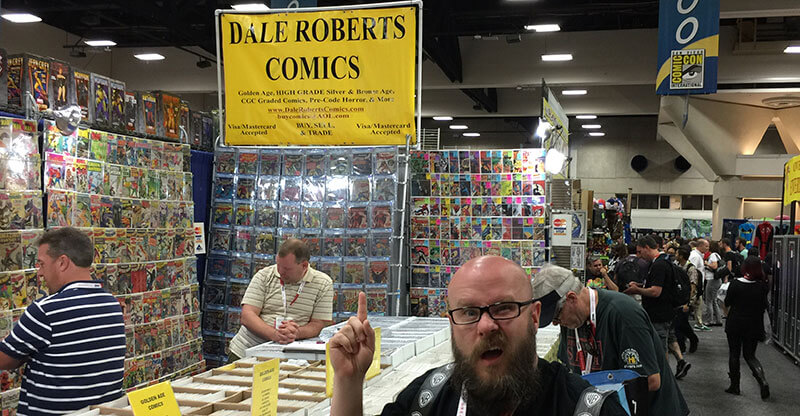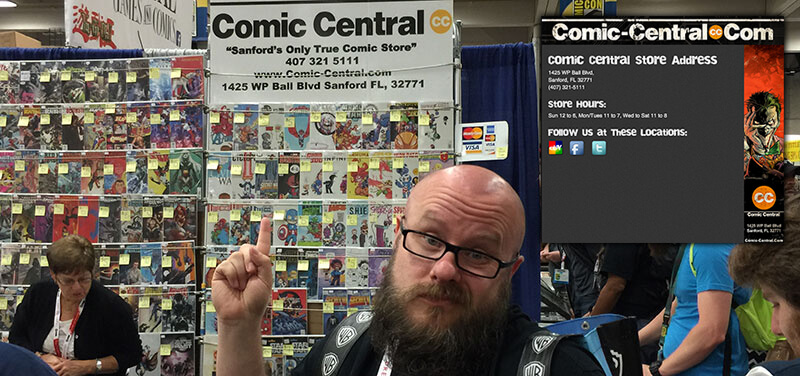What can local business marketers learn from San Diego’s largest convention? Columnist Greg Gifford explores.
Excelsior, fellow local search fans! I was lucky enough to attend Comic-Con in San Diego a few weeks ago. About half of the massive convention center hall was populated by toy and comics vendors, so the room was full of local businesses.
If you’ve read any of my past columns here, you know I’m pretty obsessed with local SEO — so, as I walked the massive convention center floor, I couldn’t turn off my marketing brain.
Now, the comic book geeks out there are thinking, “But Greg, comics sell online, so it’s just e-commerce.” But that’s the wrong way to look at things. Every one of these vendors has an actual physical location where they do business with customers. Many of the vendors we talked to were based in southern California, but there were vendors from all over the country.
The big movie studios spent tons of money on their marketing efforts, but the comics vendors almost didn’t seem to care. I couldn’t even count the number of vendors that didn’t have a URL or phone number on their signs.
As I cringed time and time again at the marketing mistakes and huge missed opportunities, the post you’re reading right now began to take shape.
These comic book vendors were marketing to a captive audience — and an audience that is 100% likely to convert and buy something. Furthermore, many comic book fans like to buy their books from a local store, but these vendors were doing nothing to help rope in any potential long-term customers.
This was a perfect metaphor for event marketing for other small to medium-sized businesses (SMBs), and I see the same mistakes at the local events that vendors were making at Comic-Con. If you’re a sponsor at a golf tournament, or a 5k, or any local event, you’re in exactly the same boat. You’re there because you want to get more awareness for your business so you’ll build your customer base.
Whenever you’re marketing to a captive audience, you need to maximize your opportunities for capturing future customers. Here are a few examples of the local marketing missteps I saw at Comic-Con this year:

This guy’s got an 800 number on his banner, but his shop is based in New York City. I went to check out his site, and he’s got an 800 number there, too. A phone number with a local area code is a huge signal of local relevancy, and he’d have the added bonus of catching the eye of any New Yorkers who recognized the area code. His site isn’t mobile friendly, either.

Woo-hoo! After quite a bit of searching, I found a vendor with a local phone number. I pulled up his website, and again — not mobile friendly. Even worse, the home page is full of info from 2011. Maybe he’s updated other pages, but the home page makes it appear to users that nothing has been done in four years.

This guy didn’t even have a phone number listed on his site. I checked his URL, and it led straight to his eBay store! Sure, if you’ve got rare comics, they’ll sell online — but he has a store where he sells comics, too. Without a website, he’s not going to rank for any local comic book searches. Even worse, he’s still using an @aol.com email address. If you’ve got a website, then you should always have your email address based at your website’s domain name!

Another toll-free number. Awesome. Just like every other vendor I checked, this guy’s site isn’t mobile friendly. Worst of all, GeoCities called and wants its design principles back.

We were planning on trying to stand in line and get one of the exclusive Comic-Con toys, and this vendor heard us talking about it. His sign simply said “Matt’s,” but he offered to buy any of the exclusives we were able to get. He handed us his card so we would remember where his booth was. He’s got a local area code and a website address (not mobile friendly, again), so the local signals were in place. But why the heck would you put a “thumbs up us on Facebook logo” on your business card? If he wanted likes, he should have listed his Facebook page’s URL.

Local area code number? Check. Address and URL? Check. I pulled up the site and stared. It’s just a single page site with a banner and his address on it. There’s a skyscraper banner on the right side, and I happened to mouse over it and see that it was clickable. It took me over to his eBay store — but if I hadn’t accidentally moused over it, I never would have known! Plus, with no content on his site, he’s never going to rank.

This one was the craziest one. This is a huge comics vendor with several booths throughout the convention floor. And their website isn’t even working! How much future business did they lose out on?
6 Local Marketing Lessons Learned
If your business will be present at a local event and marketing to a captive audience, make sure you pay attention to the six lessons we learned at Comic-Con:
- Make sure you’ve got a website. Obviously, check that it works before you print your signs and business cards. An eBay store doesn’t count, either; it needs to be your own site.
- Make sure your website is mobile-friendly. If you’re at an event where you’re selling something, it’s likely that customers will price shop. If you’re not selling anything, you still want people to be able to check out your company.
- Make sure your site is well designed for a good user experience. Unless you’re purposefully going for the retro-kitsch thing, don’t have a site that looks like it was designed in the early ’90s. Make sure your site is easy to navigate, and definitely be sure to optimize your site with the correct local signals so you’ll rank well in local searches.
- Make sure your email address uses your site’s domain name. AOL addresses make you look less professional, and a branded email helps showcase your URL whenever someone sees your email address.
- Make sure you’re using a local number. This is especially important on your website, but on business cards and ads, too.
- Make finding your social properties easy. If you’re printing business cards, fliers or ads, make sure you list the URLs for your social properties, not just icons.




